Rare "CONFIDENTIAL" - U.S. Pilot and Bomber Crew Field Printed Map - “Okinawa Shima - Le Shima Airdromes”



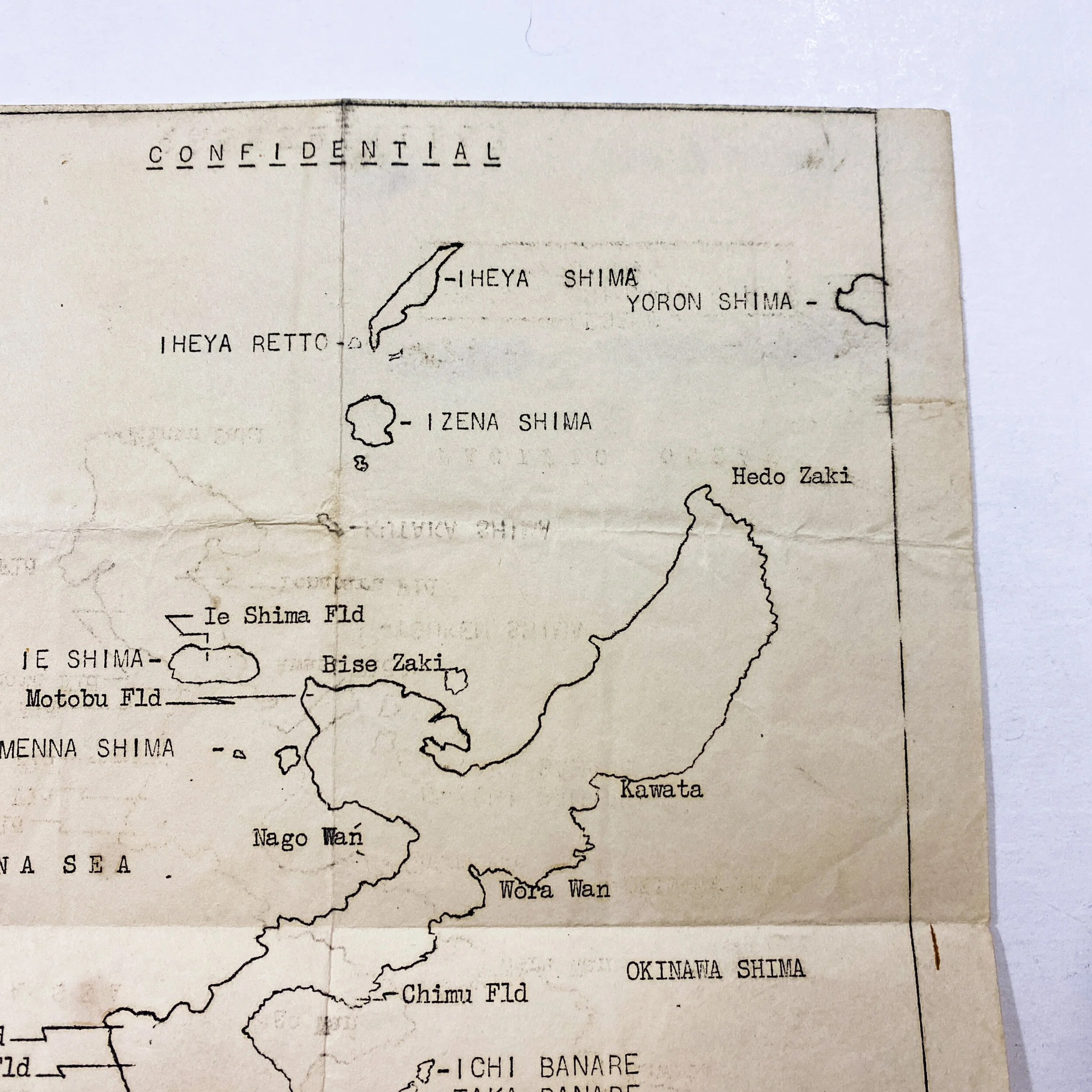


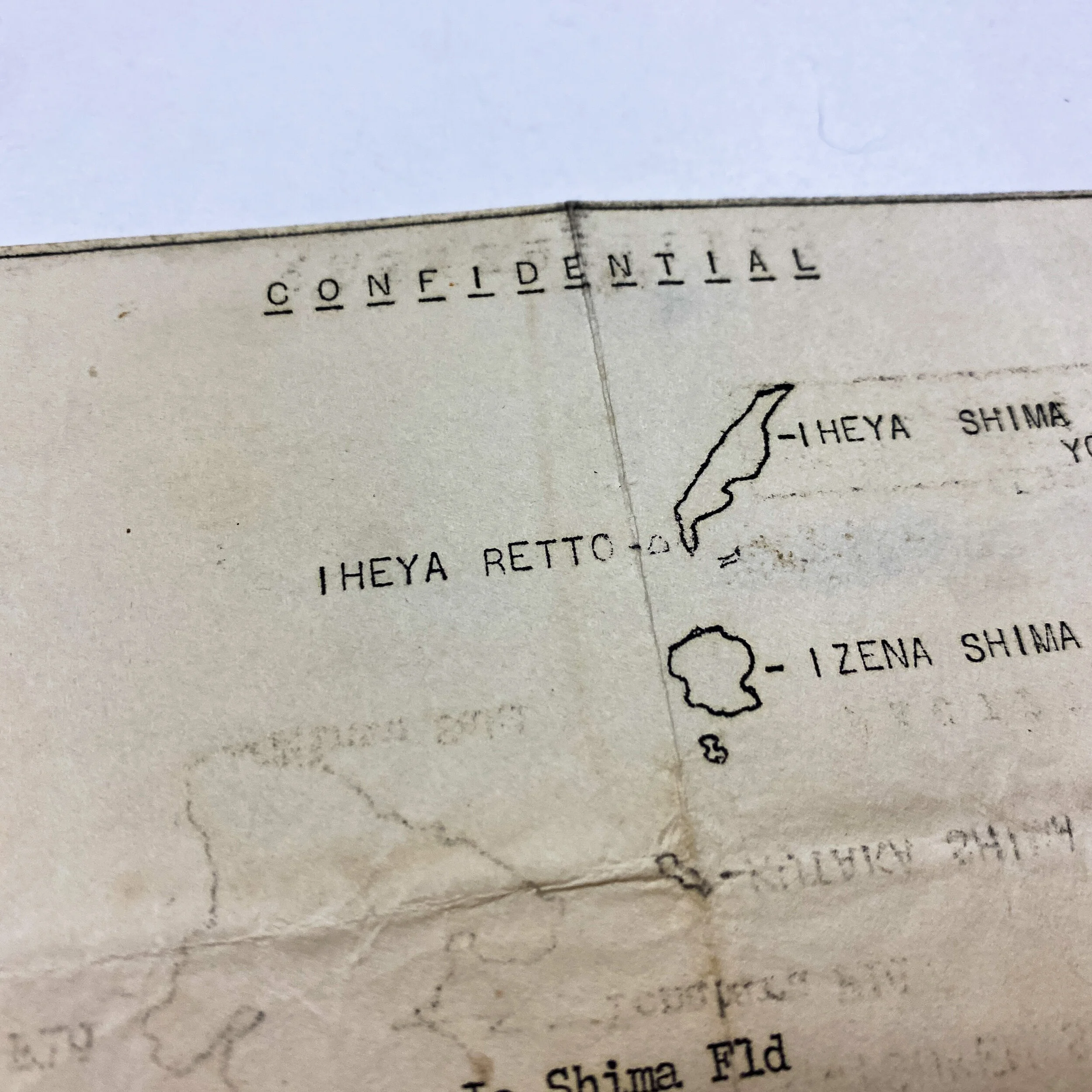
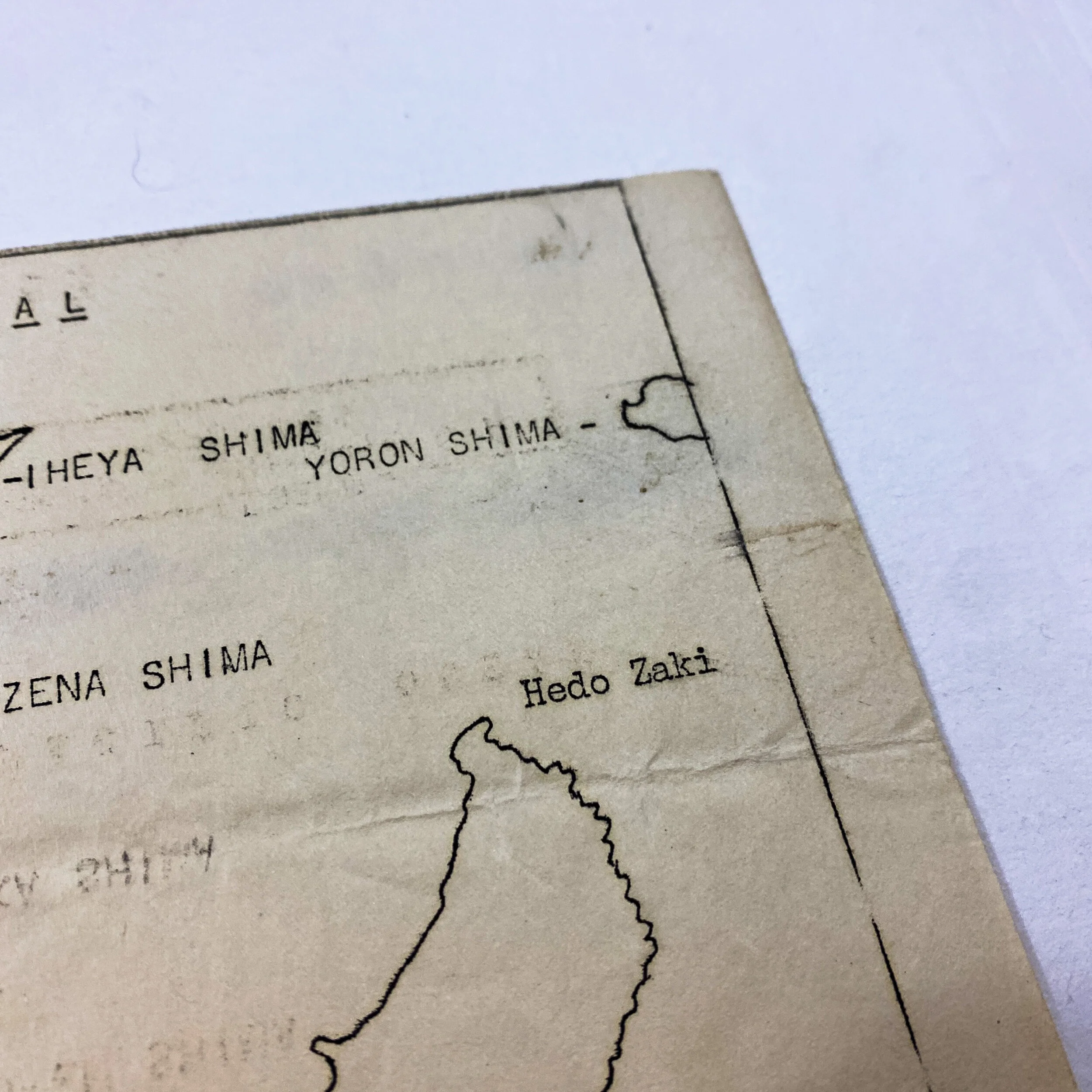
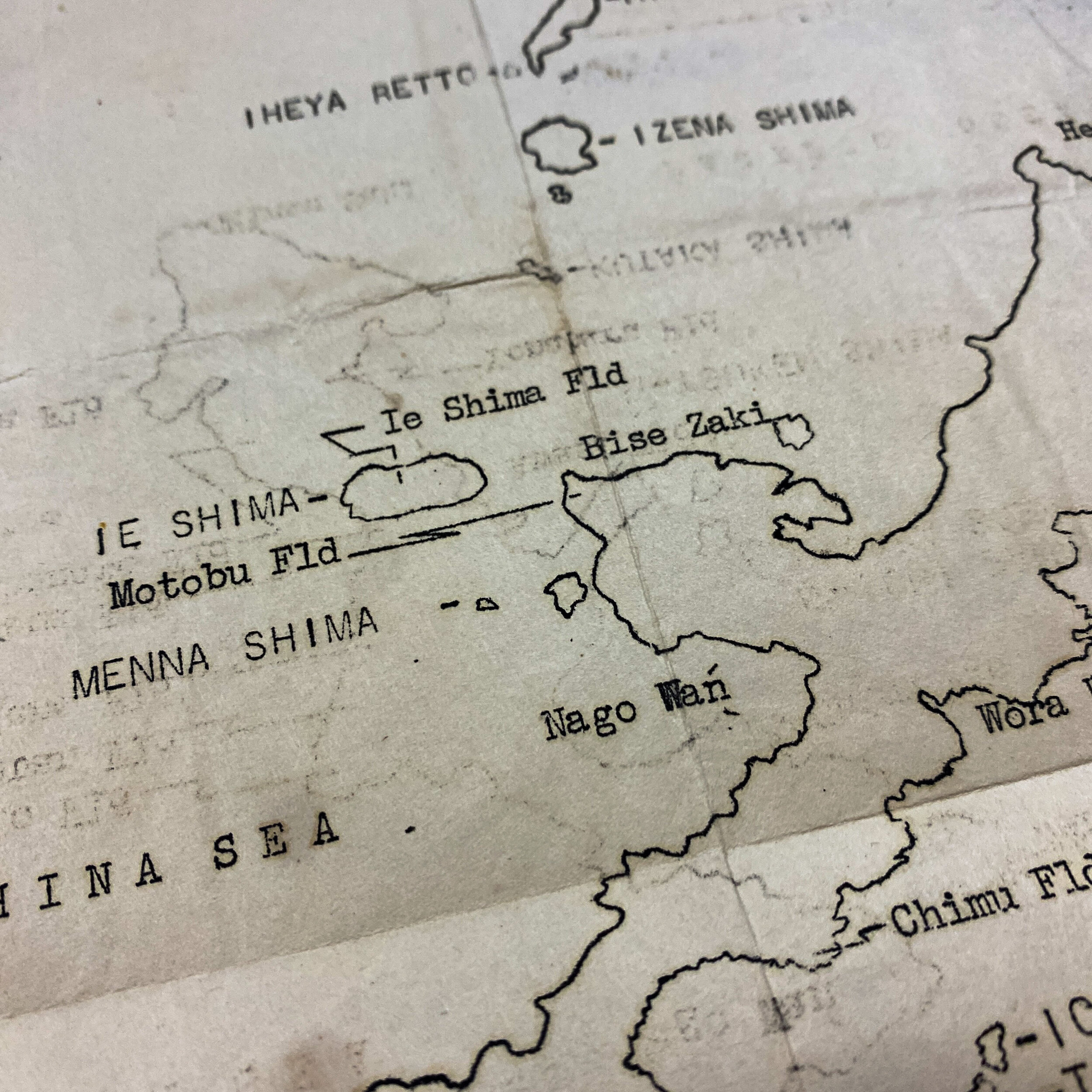
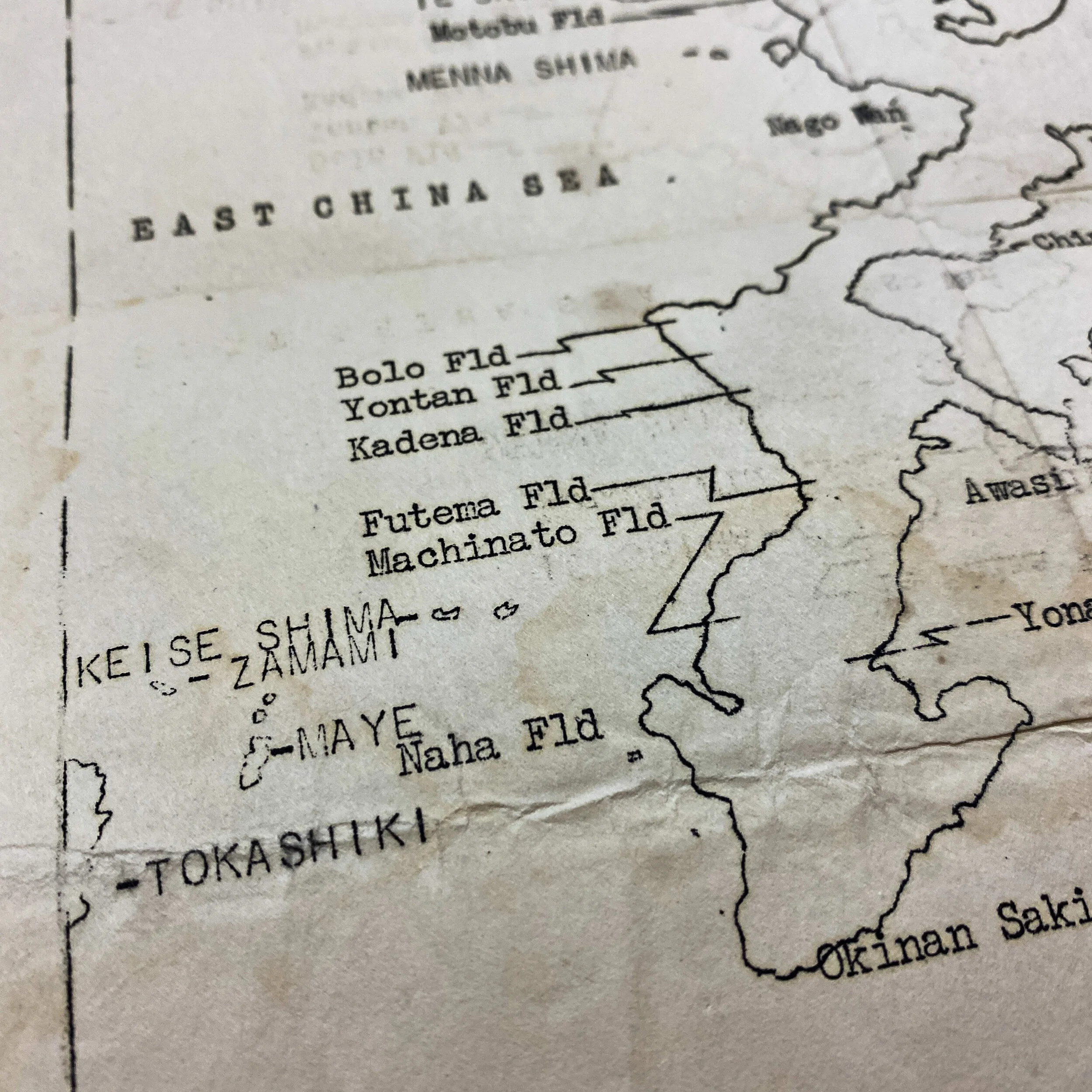

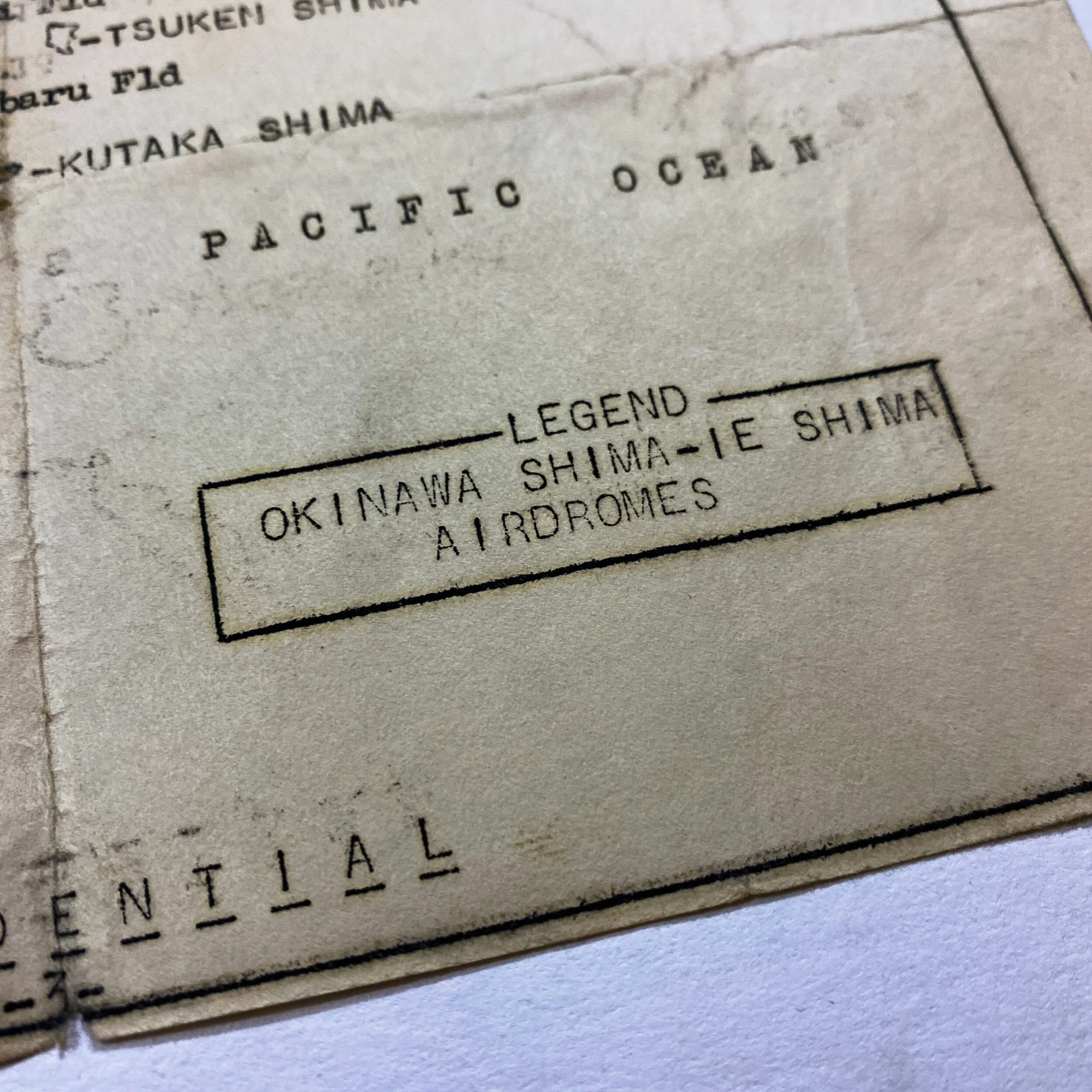
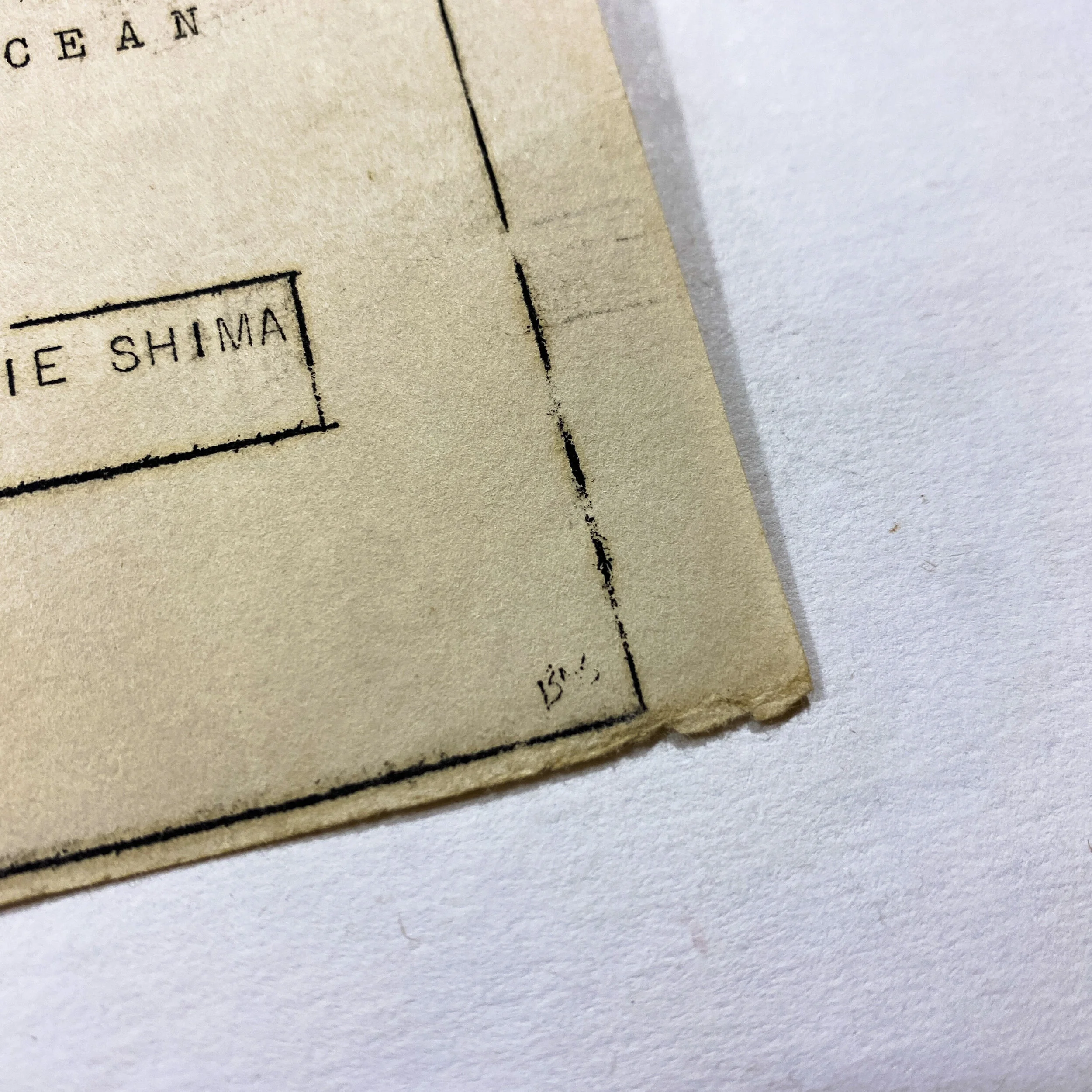
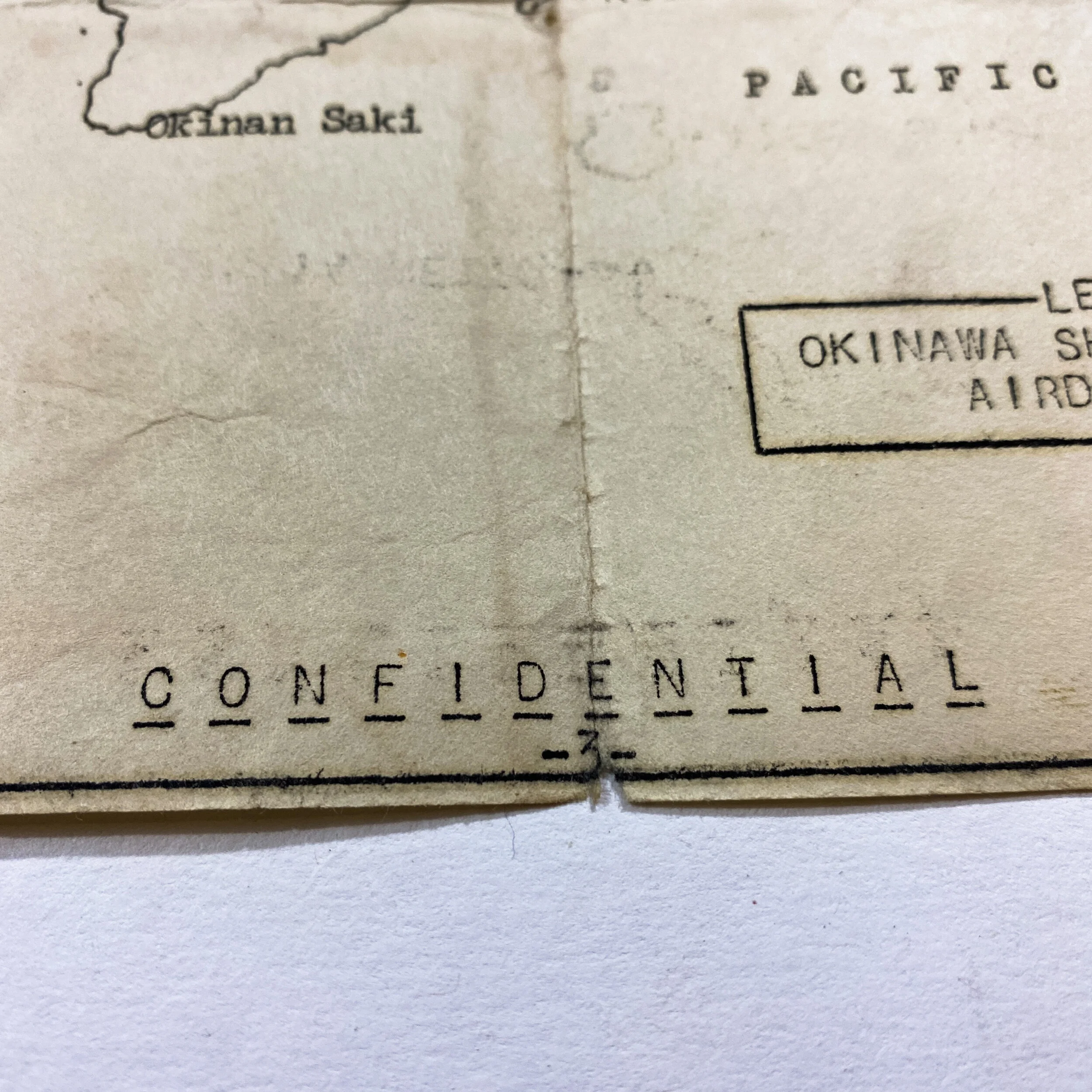
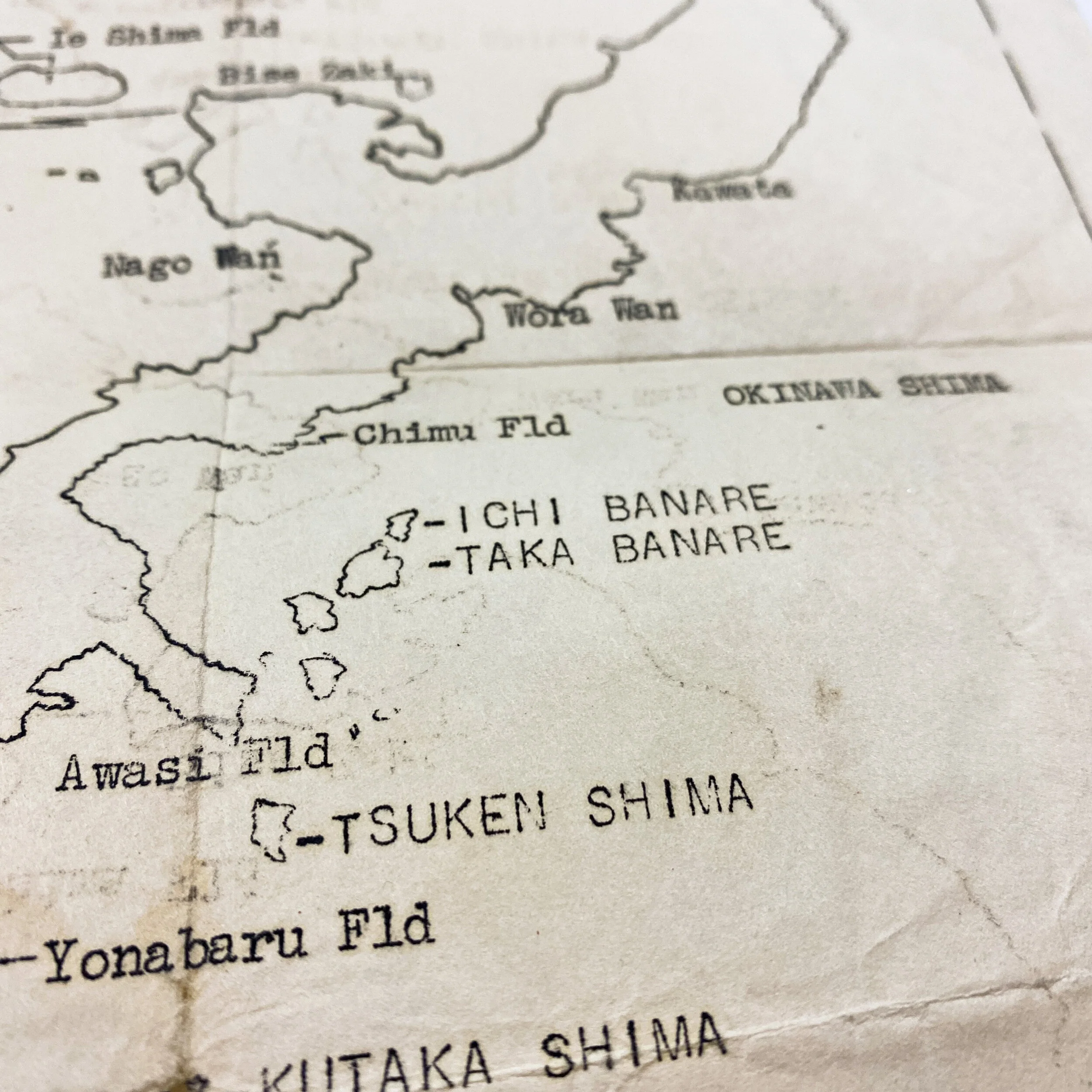
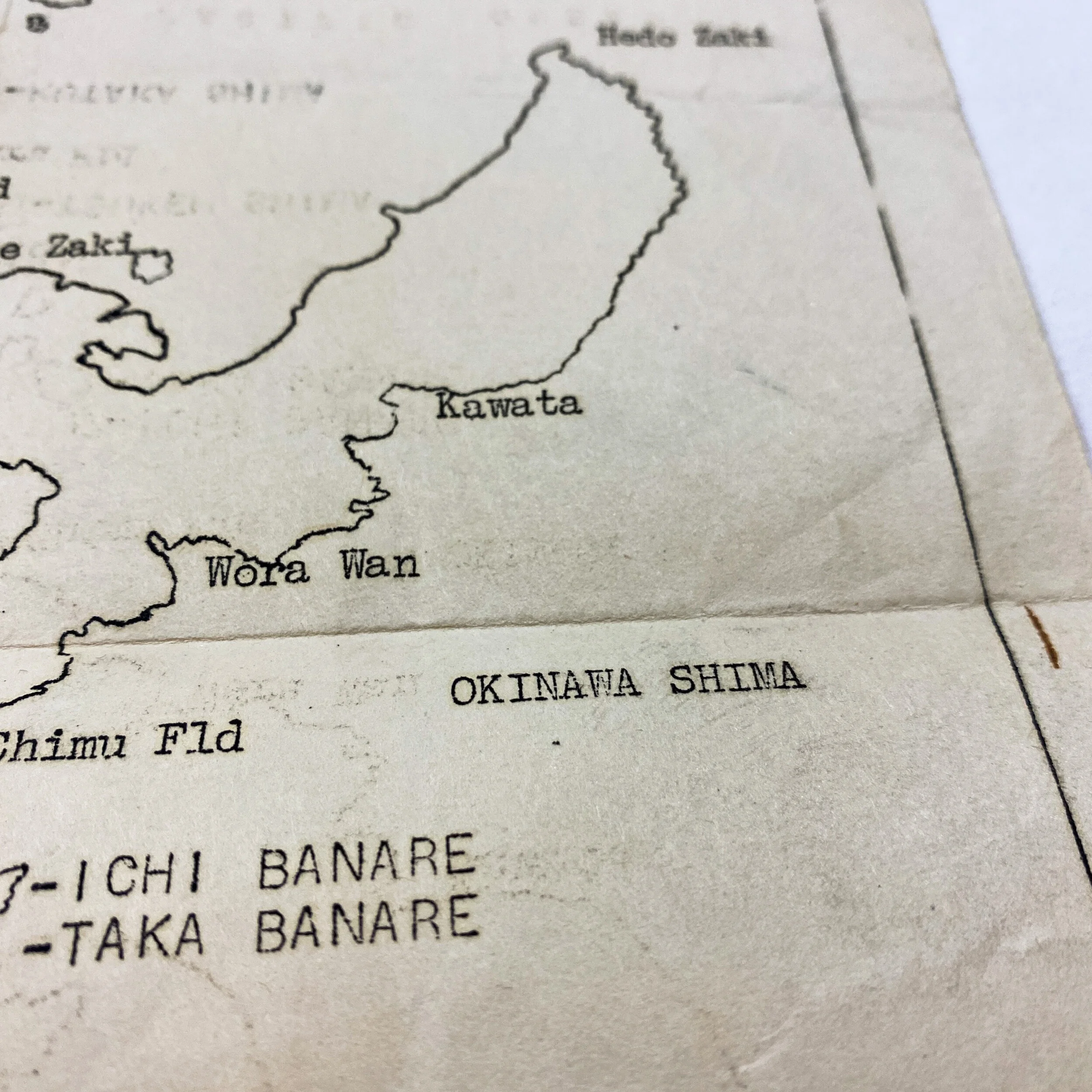

Rare "CONFIDENTIAL" - U.S. Pilot and Bomber Crew Field Printed Map - “Okinawa Shima - Le Shima Airdromes”
Size: 8 x 10.5 inches
Referred to as the "typhoon of steel" in English, and tetsu no ame ("rain of steel") or tetsu no bōfū ("violent wind of steel") in Japanese. The battle of Okinawa has dawned these nicknames that refer to the ferocity of the fighting, the intensity of Japanese kamikaze attacks, and the sheer numbers of Allied ships and armored vehicles that assaulted the island during WWII. The battle was one of the bloodiest in the Pacific, with approximately 160,000 casualties on both sides: at least 75,000 Allied and 84,166–117,000 Japanese, including drafted Okinawans wearing Japanese uniforms.149,425 Okinawans were killed, committed suicide or went missing, a significant proportion of the estimated pre-war 300,000 local population.
This extremely delicate ‘field-printed’ Allied map is marked “CONFIDENTIAL” in all capital letters on the top and bottom of the map face. Titled “Okinawa Shima - Le Shima Airdromes” this map shows the entire island of Okinawa and the adorning islands off its coasts from the East China Sea to the Pacific Ocean. The crude markings and construction of the Okinawa air invasion map was most likely done as a ‘field print’, either on an approaching U.S. Navy ship preparing for the invasion, or on a recently occupied Japanese island nearby Okinawa as U.S. pilots and crew began to brief on future objective and expected opposition. What makes this map so rare is that it clearly labels the known locations of Japanese airfields and airdromes on the island, these location would have been found and labeled from previous Allied aerial reconnoissance missions. Understanding the Japanese airdrome and their locations was pivotal for Allied air superiority during the battle ahead. This map was most likely carried and used by U.S. aircraft pilots and bomb crews for briefing, navigational and objective purposes, specifically for bombing Japanese aircrafts and their airfield locations. The quicker the pilots and crews could knock out the Japanese airdromes the less men would be killed from ruthless Japanese kamikaze attacks.
During the battle and ferocious fighting the American Navy, Marine, and Army Air Force plane count exceeded 3,000 over the course of the battle, including fighters, attack aircraft, scout planes, bombers and dive-bombers. The invasion was supported by a fleet consisting of 18 battleships, 27 cruisers, 177 destroyers/destroyer escorts, 39 aircraft carriers (11 fleet carriers, 6 light carriers and 22 escort carriers) and various support and troop transport ships.
Japanese air opposition had been relatively light during the first few days after the landings. However, on April 6, the expected air reaction began with an attack by 400 planes from Kyushu. Periodic heavy air attacks continued through April. During the period March 26 – April 30, twenty American ships were sunk and 157 damaged by enemy action. For their part, by April 30, the Japanese had lost more than 1,100 planes to Allied naval forces alone.
Between April 6 and June 22, the Japanese flew 1,465 kamikaze aircraft in large-scale attacks from Kyushu, 185 individual kamikaze sorties from Kyushu, and 250 individual kamikaze sorties from Formosa. While US intelligence estimated there were 89 planes on Formosa, the Japanese actually had about 700, dismantled or well camouflaged and dispersed into scattered villages and towns; the US Fifth Air Force disputed Navy claims of kamikaze coming from Formosa.